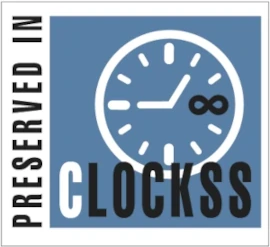Where is the Funding for Anti-Trafficking Work? A look at donor funds, policies and practices in Europe
DOI:
https://doi.org/10.14197/atr.20121436Keywords:
human trafficking, anti-trafficking, funding, donors, NGOs, impact, Europe, CEE countriesAbstract
Little is known about the amount of money spent on anti-human-trafficking programmes today, much less what the impact of this funding is. As precise information is largely lacking, available data mainly derives from organisational experiences from the field. As the author works for La Strada International, a Europe-based non-governmental organisation (NGO) network against trafficking in human beings, this article focuses on funding in Europe, reflecting the experience of anti-trafficking NGOs concerning funding patterns, current donors, donor policies and criteria, and, where possible, how this has impacted La Strada’s work. The article looks at (inter)governmental, public and private funding, looking at problematic policies to do with geographical restrictions or restrictions on what funds can be spent on. Throughout the region there are inefficiencies in funding and a great need for impact evaluations to ensure future funds are well spent.
It is difficult to find out how much funding currently goes to anti-trafficking work and how much has been spent in the past. There is no adequate overview available of funding given to anti-trafficking work, globally or at regional levels, though attempts are being made by different stakeholders, including the Global Fund to End Slavery and the European Commission (EC), to estimate amounts granted and in the latter case to also define the impact of such grants.
This article looks at trends in funding for non-governmental organisations (NGOs) providing counter-human-trafficking programmes and services since the 1990s, particularly through the lens of a large NGO network based in Europe, La Strada International (LSI). The article looks at donors, their policies and criteria and, where possible, how this has impacted NGO work, particularly that of the La Strada network.
¿Dónde está la financiación para el trabajo contra la trata? Revisando los fondos de los donantes, políticas y prácticas en Europa
Resumen
En la actualidad, se conoce muy poco sobre la cantidad de dinero gastado en programas contra la trata, y mucho menos cuál ha sido el impacto de esta financiación. A falta de información más precisa, los datos disponibles se derivan, en gran parte, de la experiencia de las organizaciones especializadas. Puesto que la autora trabaja para La Strada International, una coordinadora de ONGs con sede en Europa trabajando en contra la de trata de seres humanos, este artículo se centra en la financiación en Europa, reflejando la experiencia de ONGs contra la trata en relación a los patrones de financiación, donantes actuales, políticas de los donantes y sus criterios incluyendo, siempre que sea posible, cómo estos factores han impactado en el trabajo de La Strada. El artículo se centra en la financiación tanto internacional como gubernamental, ya sea pública o privada, buscando las problemáticas políticas relativas a las restricciones geográficas, o en qué debe o no gastarse el dinero. En esta región, existen ineficiencias en la financiación y una gran necesidad de realizar evaluaciones de su impacto, que aseguren que los futuros fondos sean gastados correctamente.
Metrics
Published
How to Cite
Issue
Section
License
The Anti-Trafficking Review has a policy of licensing under the Creative Commons Attribution License (CC-BY). Under the CC-BY license, the public is free to share, adapt, and make commercial use of the work. To protect our work and that of our authors, however, users must always give proper attribution to the author(s) and the Anti-Trafficking Review (i.e. with a complete bibliographic citation and link to the Anti-Trafficking Review website and/or DOI).
The Anti-Trafficking Review promotes the sharing of information, and we therefore encourage the reproduction and onward dissemination of articles published with us.








